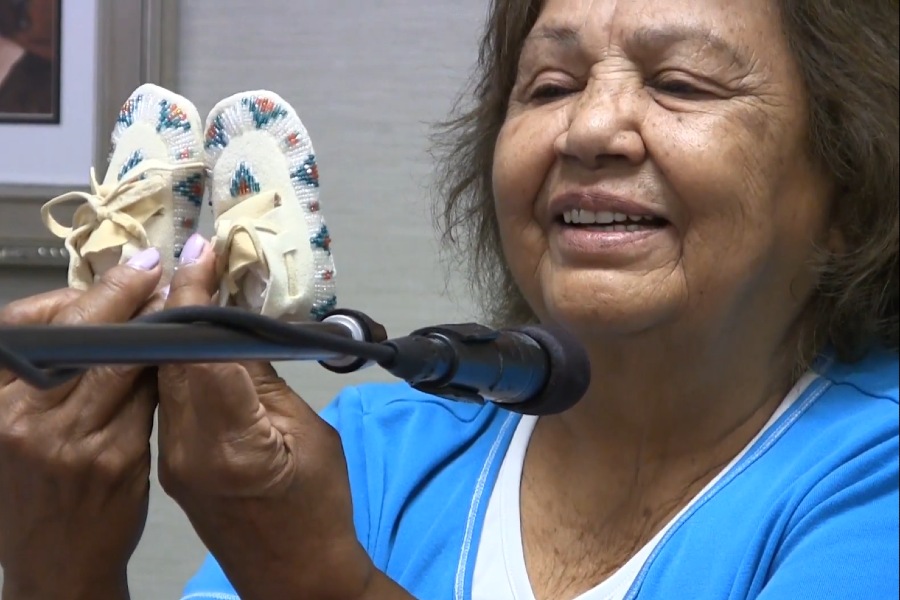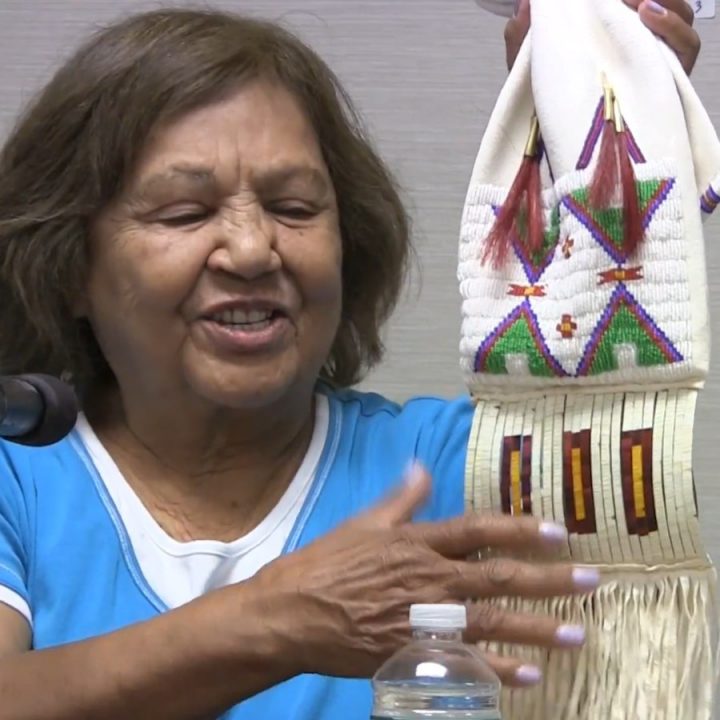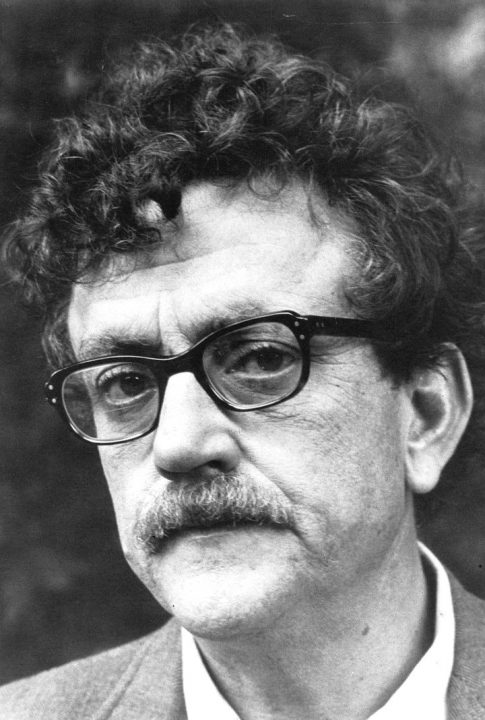
Exploring a Baha’i and Native American Cultural Perspective on Art
If you’ve ever been to the National Museum of the American Indian in New York City, then you’ve probably seen the work of Ina McNeil. She’s an award-winning Hunkpapa Lakota Sioux artist known for her beautiful quilts, intricate beadwork, and Lakota dolls — and she’s also the first Lakota Baha’i.
“I often say that all these beautiful things that you see in a museum were really used for everyday life amongst Indigenous people,” Ina says. “Today, of course, we have wonderful artists that have taken these methods and ideas [and] have done phenomenal artwork.”
RELATED: How an Indigenous Artist Views the Baha’i Teachings
And for Ina, the two most significant influences on her art are the Baha’i writings and her Native American culture. Together they’ve shaped her approach to art and her understanding of its purpose.
Creating Art That Serves a Purpose
“We do not make art just to hang on a wall, at least [we] never did before,” Ina says of the traditional Native American approach to art. “We took the objects that we used every day and made them beautiful.”
Creating with a purpose is an integral part of Lakota culture, Ina says. “I was always taught that I should never sit idly and hold my hand and not do anything — that the most accursed person in our culture was one who did that, that we must always be busy, we must be creative and…create something of beauty, of use, or something.”

Ina became a Baha’i in 1965 at 24 and was happy to find out that the Baha’i Faith speaks highly of the arts’ power and significance. The Baha’i writings say, “Arts, crafts and sciences uplift the world of being, and are conducive to its exaltation.”
Everything Ina creates — from the dolls she makes to the quillwork she weaves — fulfills this purpose of uplifting and aiding humanity. To that end, she believes in creating useful and beneficial things.
Making Lakota Dolls to Inspire Children’s Imagination
Even the traditional Lakota dolls she’s known for making serve a dual purpose: playing and firing up the imagination.
The Lakota “made faceless dolls, and they dressed them up the way our people dressed, and they used them with storytelling,” Ina says. “Storytelling was very important, and still is, in our culture. And so, through storytelling, they are able to teach children a lot of things.”
Usually, dolls have a happy, stationary face. “And if you’re telling a story about being angry or frightened, the face of that doll will never change,” Ina says. “So, our people used faceless dolls, so that the child’s imagination could be utilized in the process.”
Crafting Porcupine Quillwork for Clothing
Ina’s belief in creating everyday items that are beautiful and useful extends to crafts such as quillwork, the practice of taking the quills off the porcupine, washing them, and dyeing them with their natural tints.
“You soak them, so you make them pliable before you bend them and sew them onto the leather, or even you could take them and weave with them and so forth,” Ina says. “There are many ways to work with porcupine quills. That’s what originally Natives put on their clothing for ornamentation or for shells and other things like that before the Europeans brought beads here to this continent.”

Centering the Spirituality of Art
One of Ina’s favorite things is the annual Santa Fe Indian Market, an art market held every year in August in Santa Fe, New Mexico. About 150,000 people from around the world attend, which Ina says gives her the opportunity to see “thousands of Native Americans doing different artwork.”
The first time she went overwhelmed her. “I saw that my brain could just not cope with it because it’s just so much,” Ina says. “It’s so intense. It’s so different — and so beautiful. Today, we have Natives doing different things that weren’t done before.”

Ina’s grandmother used to tell her that “this creative process always comes from the spirituality of people.” And in the Baha’i Faith, “the acquisition of sciences and the perfection of arts are considered acts of worship.”
Indeed, Abdu’l-Baha, the authorized interpreter of the Baha’i writings and the son of Baha’u’llah, the prophet and founder of the Baha’i Faith, said:
All art is a gift of the Holy Spirit. When this light shines through the mind of a musician, it manifests itself in beautiful harmonies. Again, shining through the mind of a poet, it is seen in fine poetry and poetic prose. When the Light of the Sun of Truth inspires the mind of a painter, he produces marvelous pictures. These gifts are fulfilling their highest purpose, when showing forth the praise of God.
When she prays, Ina says she often asks God for help in creating beautiful, useful, uplifting things.
“Sometimes when I go in my room, and I say, ‘Oh God, assist me to just not sit here and make something,” Ina says. Her spiritually and culturally grounded prayer is always this: “to create something that is beautiful that people will enjoy, not just myself and my family, but other people as well.”

Source link






